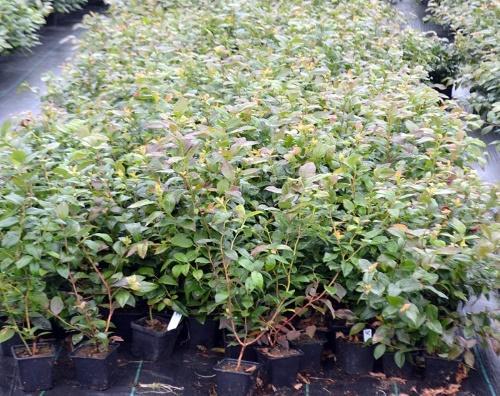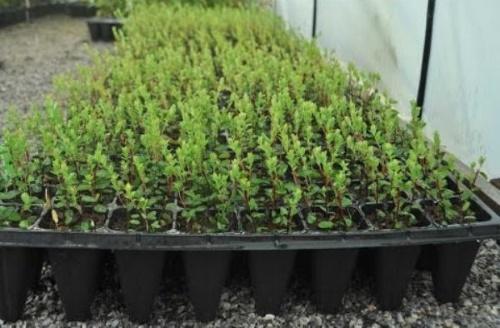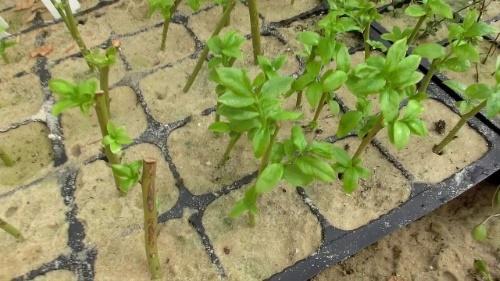Reproduction of blueberries is a delicate, but rewarding business
 Mass plantings of blueberries can be found mainly in natural conditions, but in horticulture this culture is still a novelty. Not every amateur is taken to grow it due to the exactingness of the plant. In addition, blueberries have their own nuances and reproduction, because they are one of the shrubs with a low root-forming ability. Not only is the rooting rate of cuttings not more than 40%, but also young specimens develop rather slowly. Blueberries from seeds will also be a surprise. Nurturing seedlings for 2-3 years, you can get a completely different variety from which the planting material was taken.
Mass plantings of blueberries can be found mainly in natural conditions, but in horticulture this culture is still a novelty. Not every amateur is taken to grow it due to the exactingness of the plant. In addition, blueberries have their own nuances and reproduction, because they are one of the shrubs with a low root-forming ability. Not only is the rooting rate of cuttings not more than 40%, but also young specimens develop rather slowly. Blueberries from seeds will also be a surprise. Nurturing seedlings for 2-3 years, you can get a completely different variety from which the planting material was taken.
Nevertheless, the vegetative method remains the most affordable for gardeners. It allows you to significantly reduce the waiting time, moreover, it preserves the varietal characteristics of the plant, in contrast to blueberries grown from seeds.
Vegetative propagation of blueberries

- cuttings;
- layering;
- delenki from an old bush.
Blueberry cuttings
You can propagate a shrub by cuttings in two ways:
- In March or December (for the southern regions), prepare lignified shoots from last year's growth. The diameter of the branches should be at least 0.5 cm, but not more than 1.2 cm. Until rooting, they should be stored in a cool place in a box with peat. In the spring, cuttings should be cut from branches no more than 12 cm long and rooted in a greenhouse or garden bed with further shelter.

- Cutting green cuttings (with a heel) from coppice shoots or branches of the first branch at the beginning of summer. To reduce the loss of precious moisture, it is better to root them in the greenhouse too. Before that, you need to process the lower cuts. root former.

Regular garden soil is not suitable for rooting. For lignified cuttings, the soil must be replaced with a mixture of river sand and peat in a 1: 3 ratio. Green cuttings root in peat and coniferous litter (1: 1).
Young bushes can be transplanted to a permanent place in a year, or better in two.
Features of reproduction of blueberries by layering
 Layers should be instilled in from April to early September. To do this, you need to loosen the ground under the bush well and choose strong and healthy shoots from the one-year growth. Opposite them, make grooves at least 6 cm deep and lay branches in them, having previously shortened (removing the tops). A wire brace will help to fix the shoot. When vertical sprouts appear, you need to let them rise to 10 cm. Then huddle up to half using peat and sawdust. The procedure must be repeated twice more, as the young bush grows.
Layers should be instilled in from April to early September. To do this, you need to loosen the ground under the bush well and choose strong and healthy shoots from the one-year growth. Opposite them, make grooves at least 6 cm deep and lay branches in them, having previously shortened (removing the tops). A wire brace will help to fix the shoot. When vertical sprouts appear, you need to let them rise to 10 cm. Then huddle up to half using peat and sawdust. The procedure must be repeated twice more, as the young bush grows.
The advantage of this method is that the plants obtained from the cuttings are stronger. Of the shortcomings, it is worth noting the long rooting process. It is possible to separate the layers from the mother bush no earlier than after 2 years. This is exactly how much time it takes to form a new developed root system.
Dividing a bush as a way to get some new plants
 Some blueberry varieties are reluctant to give new growth, so it is somehow a pity to cut the existing shoots into cuttings. But, thanks to the superficial root system, you can dig up an adult bush and divide it into 3-4 parts. At the same time, it is important that each section has its own root, given that the culture does not form new roots well. In order for the rooting process to be successful, the delenki should be treated with growth stimulants. It is better to carry out the procedure in spring, so that before the onset of frost, the separated bushes have time not only to take root, but also to get stronger.
Some blueberry varieties are reluctant to give new growth, so it is somehow a pity to cut the existing shoots into cuttings. But, thanks to the superficial root system, you can dig up an adult bush and divide it into 3-4 parts. At the same time, it is important that each section has its own root, given that the culture does not form new roots well. In order for the rooting process to be successful, the delenki should be treated with growth stimulants. It is better to carry out the procedure in spring, so that before the onset of frost, the separated bushes have time not only to take root, but also to get stronger.